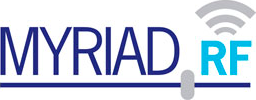Hi @DaveM,
Recently I experimented with BPSK based packet data transfer with LimeSDR-mini. I used Gnuradio 3.8 to create the flow graph. It’s working in simulation mode perfectly. But I’m yet to resolve the issue with LimeSDR mini. Looks like some synchronization problem is happening between transmitter and receiver hardware. I’m not an RF engineer, so having some difficulties to pinpoint the problem.
You might get some idea from my post here for the BPSK flow graph. I’m trying to understand the problem and will report back if any success.
Cheers!
